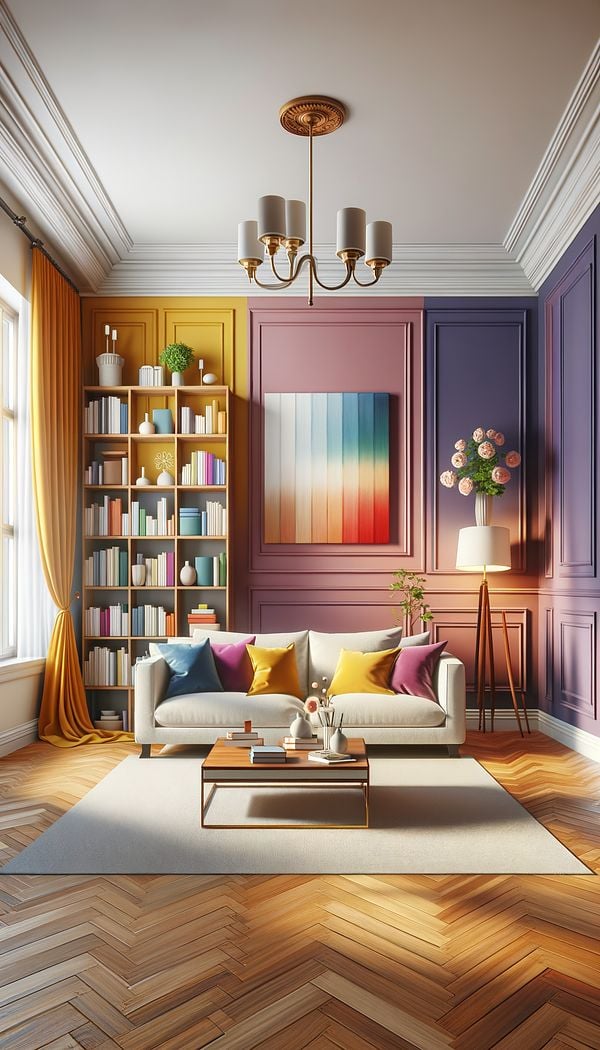What is Pigment?
Pigment is a colored material that is used to add color to other materials.
Description
Pigment, in the realm of interior design, refers to finely powdered substances that are mixed with a liquid to produce paint, ink, plastic, fabric, cosmetics, and more. Unlike dyes, pigments are insoluble in water and other solvents. They must be finely dispersed in a binder (or vehicle), which then adheres to the surface being colored. Pigments are chosen for their quality to retain color over time without fading, their capacity to withstand various environmental factors, and their ability to cover a surface with a layer of color.
Pigments come from a variety of sources, including minerals, plants, synthetic processes, and even certain animal products. They can produce a wide range of colors, from vibrant hues to subtle shades, depending on their chemical composition and how they are processed. In interior design, pigments play a crucial role in creating the desired aesthetic and mood through color. They are used in everything from wall paint and furniture finishes to decorative objects and textiles.
The way pigments are mixed and applied can significantly impact the final appearance of a room or an object. Factors such as pigment concentration, the type of binder used, and the method of application (e.g., painting, staining, printing) all influence the color intensity, texture, and durability of the finished product. Understanding pigments and how they work allows designers to make informed choices and achieve specific design goals.
Usage
In interior design, pigments are used in various applications such as selecting paint colors for walls, choosing fabric dyes for upholstery, and creating finishes for wood or metal surfaces. For example, when designing a living room, a designer might select a pigment-based paint with a matte finish for the walls, to provide a soft, inviting atmosphere. Similarly, in selecting textiles for a bedroom, a designer might choose fabrics dyed with pigments that offer rich, long-lasting color to ensure the space remains vibrant over time.
FAQs
-
How are pigments different from dyes?
Pigments differ from dyes in that they are insoluble in water and other solvents. They need a binder to adhere to surfaces, whereas dyes dissolve in water and can directly stain materials.
-
Can pigments fade over time?
While pigments are generally more resistant to fading than dyes, exposure to sunlight and environmental factors can cause some pigments to fade over time. Choosing high-quality, UV-resistant pigments can minimize this effect.
-
Are all pigments safe to use in all areas of the home?
Most pigments used in interior design are safe for general use. However, some pigments, especially certain types of synthetic or heavy metal-based pigments, can be toxic or harmful if ingested or inhaled. It is important to use pigments according to the manufacturer's guidelines and consider safety, especially in areas like kitchens or children's rooms.
Practical Application
When selecting pigments for an interior design project, consider the light exposure in the space, as this can affect how the color appears and how well it holds up over time. It's also beneficial to test colors in the actual space where they will be used, as colors can look different under various lighting conditions. Additionally, understanding the properties of the pigments and the binders you're working with will help in achieving the desired finish and durability.
-
Decorating Principles & Elements330 articles
-
Materials & Textiles360 articles
-
Color & Patterns154 articles
-
Wall Treatments & Finishes157 articles
-
MarbleMarble is a timeless, elegant natural stone often used in interior design.
-
CarcaseCarcase refers to the framework or body of a piece of furniture, typically hidden beneath the surface materials.
-
Pillow Top MattressA pillow top mattress is a mattress that features an additional upholstery layer sewn on top for extra comfort.
-
Persian RugA Persian rug is a handwoven carpet from Iran, known for its intricate designs and high quality.
-
Hand TiedHand tied refers to a construction technique used in high-quality furniture and rugs.
